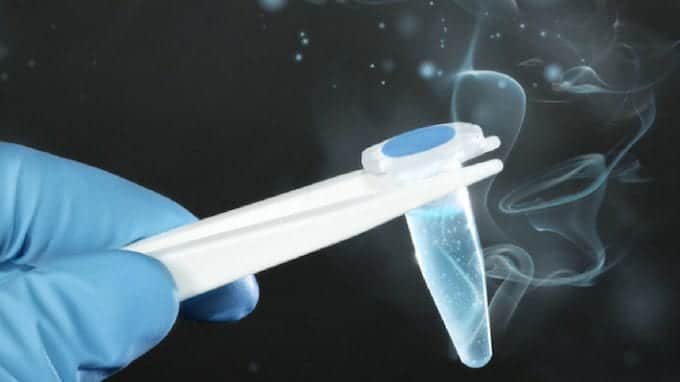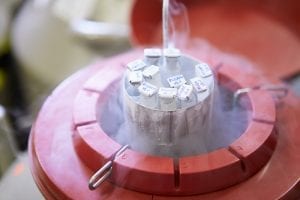Sperm banking can prove valuable for men hoping to ensure their ability to conceive children later in life, or give them the possibility to use donor sperm, when they have no sperm or a poor semen analysis. But what exactly is sperm banking?
Sperm Banking Defined
Banking sperm is a fertility-preservation method that may be utilized by men who cannot or do not wish to conceive a child under their current circumstances. Banked sperm is typically housed for safekeeping in designated medical facilities. Another alternative that sperm banks offer is to use donor sperm when necessary.
The Process
Men produce semen samples that are then given to a sperm bank facility. Samples are usually obtained through masturbation. Once the medical professionals receive these samples, the specimens are frozen. Frozen sperm can be revived once a couple decides to conceive and the conception process can be engineered through various fertilization techniques (including in-vitro fertilization, or IVF). In many instances, sperm samples can remain frozen for several years. In most cases, all males who are past the pubescent stage can bank sperm.
The Reasons Men Bank Sperm
There are many reasons as to why a man might chose to bank his sperm or use donor sperm. We have listed a few of the most common reasons below:
- Systemic Health Conditions – At other times, men diagnosed with serious sexual or reproductive tract issues may need to consider sperm storage as a fertility option. Certain conditions like cancer (testicular, prostate or others in the reproductive region) might either greatly inhibit sperm quality or render a man sterile. Additionally, treatments used to remedy the conditions could exert a significant impact on sperm count and quality.
- Life Factors – Some men do not wish to father children until reaching a certain level of financial and professional stability. In other cases, men who spend extended durations traveling, like those in the military, might also choose to wait until personal circumstances offer greater stability.
- Infertility – If a man suffers from infertility, donor sperm is often the last chance to help achieve the dream of a child.
Issues to Consider When Choosing a Sperm Bank
Not every sperm bank is the same. Prior to donating semen specimens or decide for donar sperm, men are strongly cautioned to conduct research and consider crucial factors such as the following:
- Health and Government Requirements – Reputable sperm banks will likely hold numerous state and federal government certifications. Some specific types of documentation include laboratory accreditation, Food and Drug Administration (FDA) compliance, as well as all pertinent state and local licenses.
- Specific Eligibility Requirements – The more reputable banking centers will require more stringent health mandates for the individuals who store or donate sperm. The regulations are established to ensure the health and quality of the specimens received, preventing problems or illnesses down the line.
The Cost of Banking Sperm
Sperm banking can be a significant expense. Specific costs will vary depending on the location, the exact facility being used for storage and the number of samples stored. In most instances, the initial collecting, testing and freezing process costs no more than $1,000. However, individuals will be charged an annual storage fee running anywhere from one to several hundred dollars.
Effectiveness
The effectiveness of banked sperm can be influenced by numerous factors including the age of the women the samples are used on, the overall physical and reproductive health of the recipient, the quality and strength of the sample and the specific fertilization method that the banked sperm is employed in. That said, researchers estimate that the overall success rate ranges between 60 and 80 percent.





